Notice fine lines around your eyes? You’re not alone. Wrinkles around the eyes are called crow’s feet and virtually everybody develops them at some point or another in life.
The thickness of your skin varies all over your body, but the skin on your face is thinner than the skin on your arms and legs — and the skin around your eyes is even thinner, making it susceptible to wrinkles and sagging.
Many people view crow’s feet as a sign of a happy, full life, as they can be attributed to laughing and smiling. However, crow’s feet develop more so because of how often we blink. On average, a person blinks 15 to 20 times per minute — that’s 1,200 blinks per hour and 28,800 blinks a day! The skin around our eyes crinkles when we blink, making it one of the main reasons crow’s feet develop. But really, any facial movements (happy or sad) can contribute to the formation of wrinkles.

Developing crow’s feet is a part of the normal aging process, and unless they bother you, there’s no real reason to get rid of them. If you are somebody who is unhappy with the appearance of crow’s feet, though, there are options to achieve smoother skin around your eyes.
Causes of Crow’s Feet
As we already mentioned, crow’s feet can mostly be attributed to blinking and facial movements. However, the development of crow’s feet is a bit more complex than that.
As we age, we produce less collagen and our skin loses elasticity. Collagen and elastin keep our skin soft, smooth, thick, and healthy. When our bodies start producing less collagen, our skin thins, becoming more prone to sagging and wrinkles. Unfortunately, reduced collagen production is also part of the normal aging process — in fact, collagen production slows at the early age of 25.
A lack of collagen and elastin can lead to more than just eye wrinkles, too — it’s the primary reason we develop lines around our mouths and on our foreheads.
Years of sun exposure and hormone changes can also impact levels of collagen and elastin, which is why wrinkles don’t usually form until you’re in your 30s, 40s, and for the super-lucky folks, 50s.
Can You Prevent Crow’s Feet?
There’s no real way to 100 percent prevent crow’s feet because you cannot stop your facial muscles from moving entirely. However, there are ways to delay their development and manage already-formed lines.
First, use a facial moisturizer with an SPF of at least 25 every day. Moisturizing your skin keeps it hydrated and smooth while SPF shields your skin from harmful UV rays. We also suggest wearing UV-protecting sunglasses to better defend both your eyes and your skin.
Another great way to prevent signs of aging is to incorporate a vitamin C serum into your skincare routine. Vitamin C is a powerful anti-aging agent, improving fine lines and skin texture. Using one of these serums two or three times a week is enough to delay signs of aging.
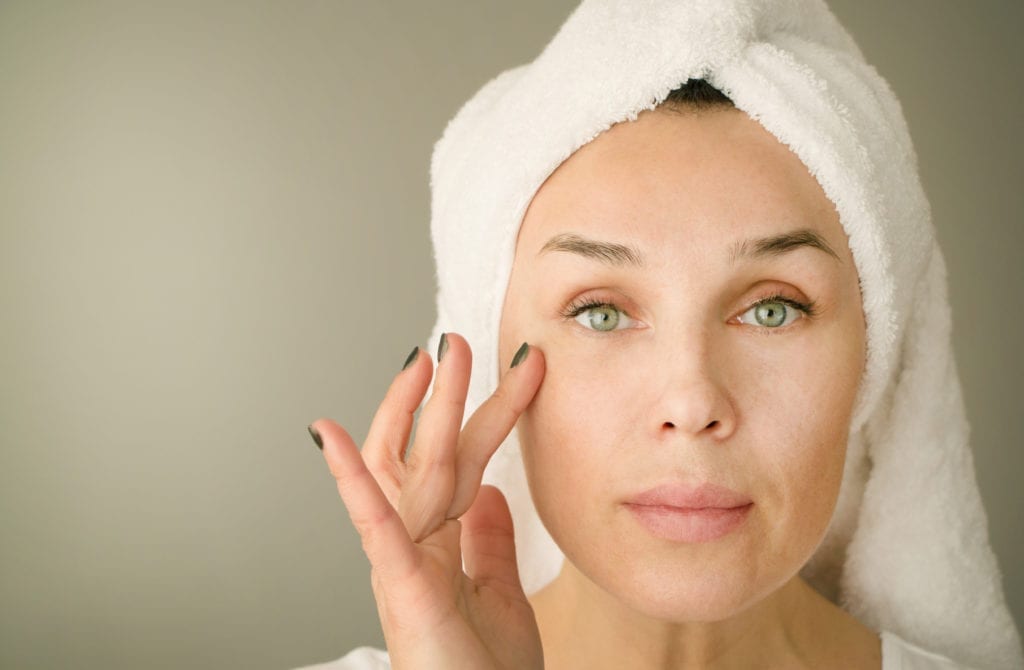
If you live in an area with poor air quality or a lot of pollution, we suggest using an antioxidant-rich eye cream to offset the free radicals that exist in the atmosphere. When browsing eye creams, it’s best to find one with both antioxidants and moisturizing ingredients to kill two birds with one stone. Some ingredients to keep an eye out for (pun intended) include honey, cucumber extract, and hyaluronic acid.
Also, drink water! You’ve probably heard this a thousand times, but staying hydrated keeps your body healthy in a variety of ways. Strive to drink two liters of water a day (that’s eight 8-ounce glasses or four 16-ounce water bottles).
We suggest drinking a large glass of water as soon as you wake up in the morning and again in the evening before bed — but not too close to bedtime, or else you’ll find yourself waking up for bathroom breaks. If you’re not a big fan of water, throw some lemon in. Not only will a splash of lemon make your water taste better, but lemon is also packed with vitamin C.
Lastly, take care of your skin. Follow a consistent routine morning and night to ensure you’re giving your skin the care it deserves. In our teens and twenties, we can take our younger, smoother skin for granted and not pay too much attention to it. Developing a healthy routine early on and sticking with it is a good way to maintain your skin’s health.
Treatments for Crow’s Feet
Since we all develop crow’s feet at some point or another, plenty of treatment options have been developed to reduce their appearance — from $15 drugstore creams to pricey cosmetic procedures. Determining the best treatment option for you comes down to considering the severity of your crow’s feet and your budget.
Anti-aging creams are suitable for those with mild to moderate eye wrinkles. Continued use of these creams can somewhat help with smoothing deeper lines, but they’re not a definite fix.
Cosmetic procedures are best for those with deeper lines around the eyes, but they can also help those with mild and moderate lines. Some even delve into cosmetic procedures to prevent lines from forming, but that’s an expensive avenue.
Home remedies can work if you have mild lines, but they’re also great for people who are just looking for a temporary solution for crow’s feet. Our home remedies listed below can help your skin appear smoother for a short period, so they’re great for somebody who wants youthful skin for the occasional date night or outing.
Let’s talk about some of the most popular solutions for combating crow’s feet.
Best Anti-Aging Creams for Crow’s Feet
The best anti-aging creams work to keep your skin moisturized, promote collagen production, and enhance skin tone. While the results of these creams typically only last 12 to 24 hours, there are plenty of creams formulated to help you achieve overall smoother skin with continued use.
If you have sensitive skin, avoid creams made with harsher chemicals, as they can cause irritations, rashes, and blistering. When possible, choose all-natural options, as they’re easiest on your skin and usually produce the best, most long-lasting results.
Let’s talk about our recommended anti-aging creams.
Peptide 10 by Adonia Organics
Peptide 10, referred to by Adonia Organics as their “face filler in a jar,” is our favorite anti-aging serum. As its name suggests, it’s packed with 10 natural peptides to reduce the appearance of wrinkles. It’s also made with several skin-enhancing probiotics to help your skin appear plumper and fuller. Let’s talk about the science behind this product.
Nanopeptides are proven to significantly reduce even deep lines and creases to improve skin texture and give new life to sagging skin. These peptides, including dipeptide-2, acetyl hexapeptide-8, pentapeptide-18, and acetyl hexapeptide-37 (to name a few), improve your skin’s healthy by stimulating collagen production, promoting healthy skin growth, and boosting elasticity. So, with continued use of Peptide 10, you can reduce the overall appearance of crow’s feet and enjoy more radiant and youthful-looking skin every day.
In addition, several live probiotics (specifically bacillus, soybean, and folic acid ferment extract) work in tandem with these nanopeptides to keep your skin smooth and nourished, ultimately preventing new lines and creases from forming.
What we really love about this anti-aging cream is how fast it works. Peptide 10 absorbs in seconds and firms your skin in only two minutes. Sounds too good to be true, right? Peptide 10 gained has so much attention over the years, it was even put to the test on the daytime TV show The Doctors. The results? Peptide 10 lived up to its promise, smoothing wrinkles in 120 seconds.
Another great thing about this cream is that it’s safe for all skin types because it’s made with all-natural ingredients. You can use this cream daily and you won’t have to worry about skin irritations.
Peptide 10 can be bought on the Adonia Organics website. It’s priced at $79 for a 2-month supply and comes with free shipping.
Athena 7-Minute Lift
Another top-rated product for fighting crow’s feet is Athena’s 7-Minute Lift Serum. We recommend this serum because it contains both Argireline and vitamin A — two ingredients proven to fight wrinkles and smooth skin.
Athena also makes this serum with 12 organic greek plant oils to nourish the skin and lock in moisture. Green tea leaf and orange peel oil contain antioxidants to reverse environmental damage; grapefruit is high in vitamin C and antioxidants to keep your skin glowing; peppermint oil revitalizes tired, saggy skin; and rose oil soothes sensitive skin. And that doesn’t even cover half of the rejuvenating plant oils in this serum.
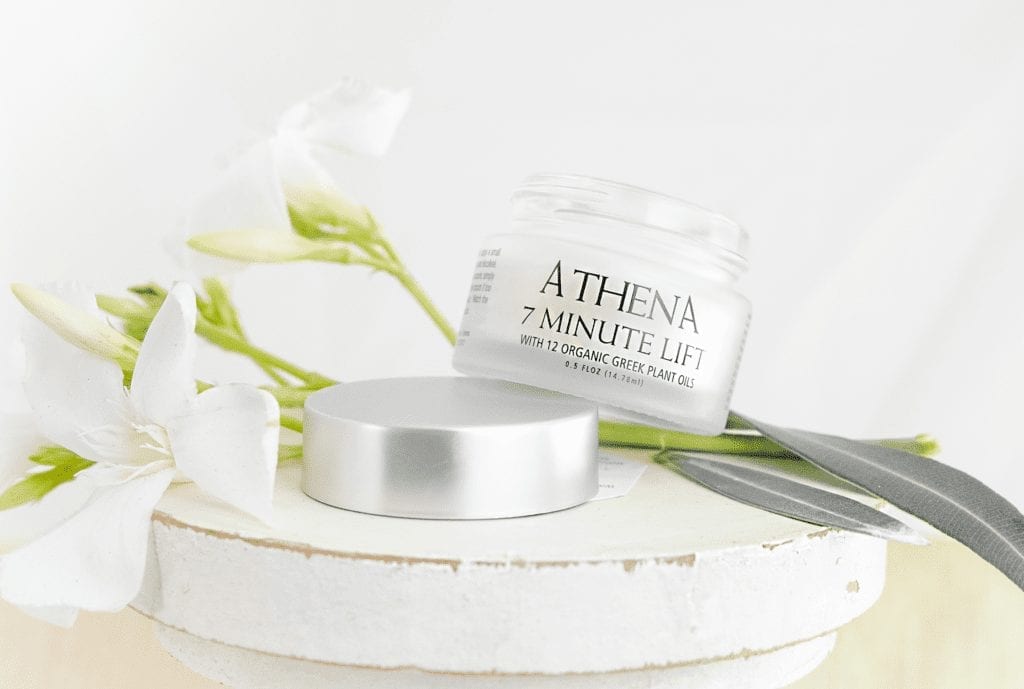
The Athena 7-Minute Lift Serum works to reduce the appearance of crow’s feet in under 7 minutes. Its non-greasy formula absorbs in seconds and produces near-instant results. When used every day, this serum can reduce eye wrinkles by up to 83%, so you can feel confident in its abilities to smooth mild to moderate crow’s feet.

In addition to crow’s feet, Athena’s 7-Minute Lift can also be used to minimize forehead wrinkles, laugh lines, and under-eye wrinkles.
7-Minute Lift is hypoallergenic and safe for all skin types. It costs $79 a jar and, if used every day, lasts around 60 days. You can find the 7-Minute Lift on Athena’s website and every jar comes with free shipping.
Best Cosmetic Procedures for Crow’s Feet
If you have deeper crow’s feet and anti-aging creams can’t do the trick, consider some of the cosmetic procedures mentioned below.
While these cosmetic procedures below are useful at delaying aging, they can be costly and they do have potential health risks for some. Certain treatments work better for others, and sometimes people find procedures just don’t work for their skin. Always talk with your doctor when considering any of these procedures, as they’ll be able to provide the best guidance.
Botox
Botox is a very popular option for treating crow’s feet because it works to partially paralyze the facial muscles, preventing them from contracting and causing wrinkles. Crow’s feet develop when the muscle around your eye (the orbicularis oculi muscle) tightens (when you blink, laugh, smile, frown, etc.), causing your skin to pull and crease.
Botox injections around the eyes can minimize muscle movements to offset the appearance of crow’s feet. You can expect to see smoother, younger-looking for up to six months after your procedure, but do keep in mind the results of these procedures vary person-to-person.
Botox for crow’s feet costs about $200 or $300 a session because the area is so small. If botox injections work for you, you’ll likely spend around $600 a year to maintain a wrinkle-free appearance.
It’s important to note, these injections aren’t for everybody, and they should be administered by an experienced cosmetic surgeon. Botox injections can have dangerous side effects when not done correctly. Some also find that botox injections don’t have any effect on their skin, or they produce barely-noticeable results.
Collagen Injections
Some have concerns with Botox, and others aren’t fond of it because they feel it makes their facial expressions look unnatural. Collagen injections are the next go-to solution for crow’s feet because many believe they have more a natural look. Plus, the results of these injections can last up to 5 years.
Collagen is a natural protein found in our bodies that works to keep our skin healthy and glowing, and since we stop producing collagen in our twenties, collagen injections can work as a supplement to revitalize our skin’s tone and texture.
Collagen injections for crows feet can cost anywhere between $400 to $1,000, depending on where you go and the severity of your wrinkles. After your procedure, you may experience some bruising and discomfort, but no downtime is necessary — you can go back to your day-to-day life as normal. It’s best to avoid sunlight, though, and of course, we suggest wearing a moisturizer with SPF 30+ to shield your skin from harmful UV rays.
Laser Skin Resurfacing
CO2 lasers are effective at tightening the skin and reducing wrinkles. These ablative lasers remove the outer, damaged layers of skin through powerful wavelengths of light. These lasers also heat the dermis (the thick layer of tissue directly below your skin) to stimulate collagen production and keep wrinkles at bay.
This procedure can be a bit uncomfortable, but local anesthetics or sedatives are often administered to ease any pain. Afterward, you can expect your skin to be a little swollen, itchy, and it may even sting a little. A few days after your treatment, the old skin will peel away and reveal more youthful skin below. Your skin may need two or three weeks to completely heal, though.
Out of all of the procedures discussed, laser skin resurfacing has the longest-lasting results. You’ll notice your skin’s appearance continually improve over a period of six months, becoming more and more radiant as time goes on. This will eventually plateau, but you can expect your skin to remain wrinkle-free for about 8 to 10 years.
Laser treatment therapy for crow’s feet costs around $1,000. The larger the treatment area, the more the price goes up. Having this procedure done on your entire face can cost up to $3,000.
Natural Remedies for Crow’s Feet
If you have mild lines around your eyes, home remedies can firm up your skin for a few hours. If you don’t necessarily care to get rid of eye wrinkles but have a special occasion that you’d like to have softer, smoother skin for, these home remedies can do the trick. These can also be incorporated into your beauty routine to improve your skin’s overall health.
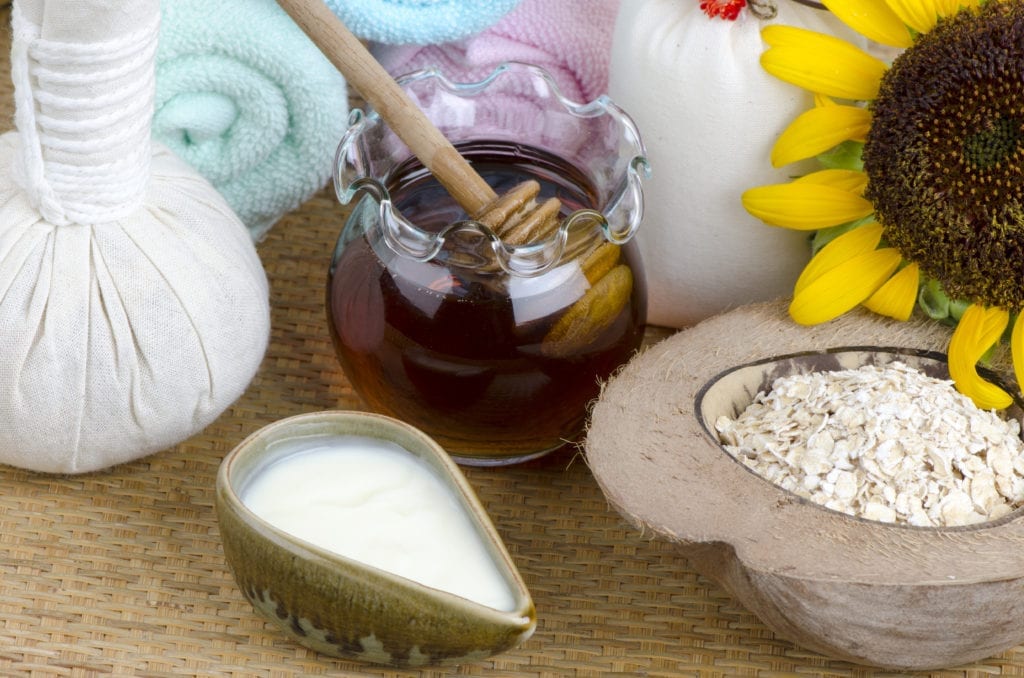
Honey and Yogurt Mask
Honey is rich in antioxidants, hydrating, and cleansing; while yogurt is both exfoliating and hydrating — all amazing things for the skin. These two ingredients work together to make one powerful age-fighting face mask.
Mix equal parts yogurt and honey in a bowl and apply the mask to your face. Let it sit for about 10 minutes before rinsing. We suggest rinsing with cold water, too, as cold water is believed to slow the aging process and fill wrinkles.
Do this mask once or twice a week to nurture your skin and prevent new lines from forming.
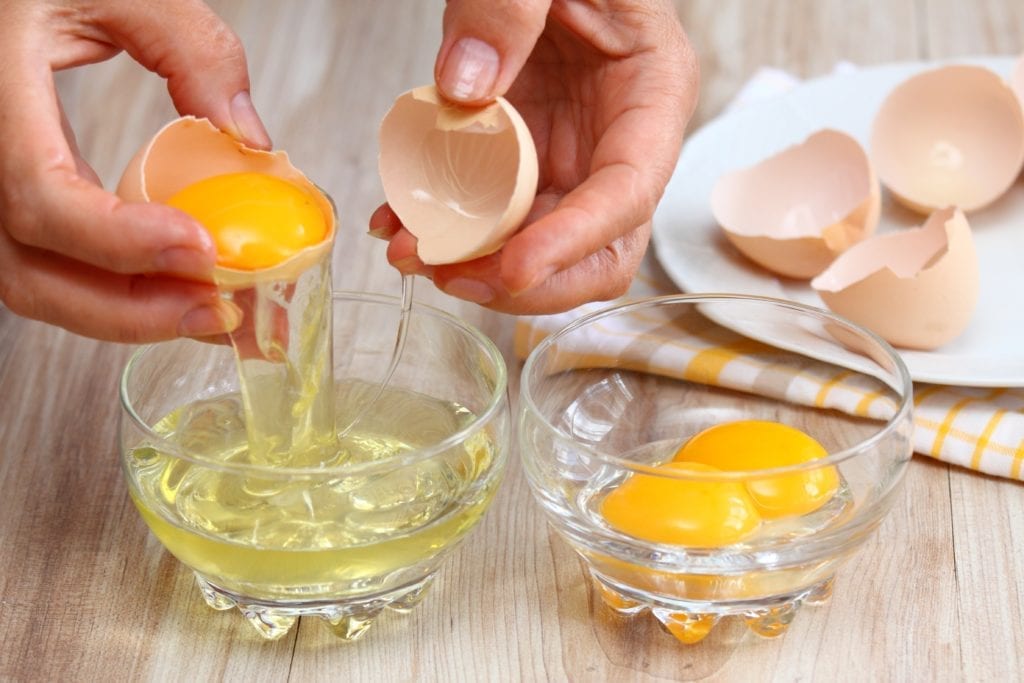
Egg White Mask
Egg whites are great for firming the skin. Plus, they’re rich in magnesium, a detoxifying and cleansing mineral. You can make an egg white mask by beating an egg white in a bowl until it’s frothy and then applying the mixture to your face. Let it sit until it dries, and then add a second coat.
Keep your face relaxed while the egg whites dry for the best results. After 15 minutes, use cold water to rinse the egg mix from your face. The result is smoother, firmer skin. We suggest doing this a few times a week to keep your skin firm and healthy.
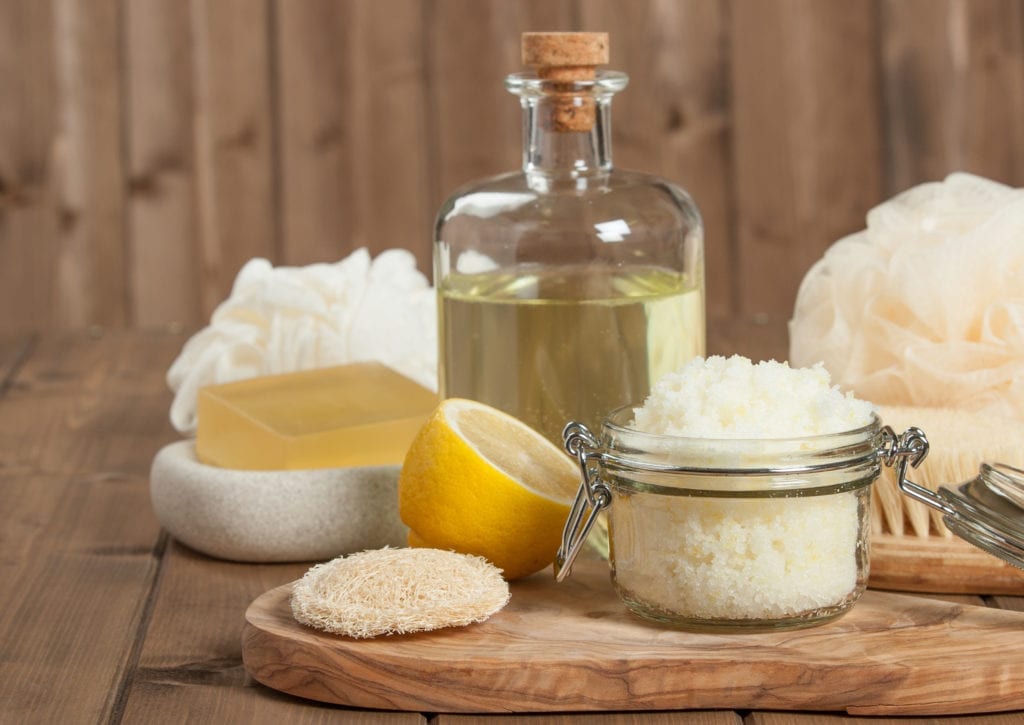
Lemon Exfoliator
Lemon, as we mentioned earlier, is packed with vitamin C, so it’s great for improving skin tone and texture. Lemon also contains citric acid that acts as an exfoliant for your skin. Using a lemon exfoliator a few times a week keeps your skin radiant.
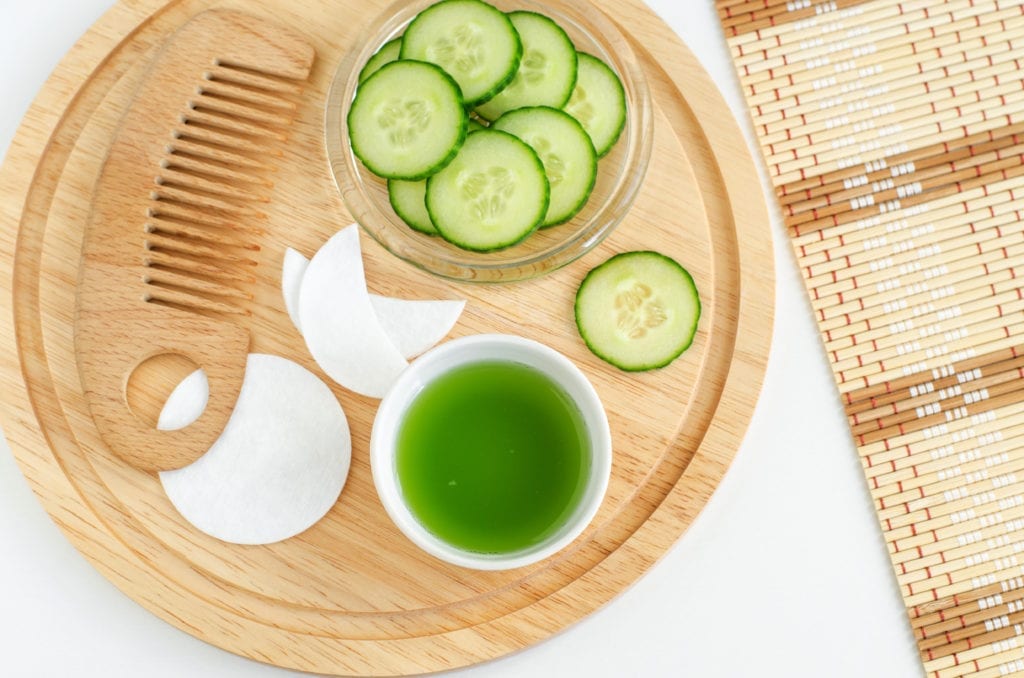
Cucumber Eye Patches
When you think of the classic spa day, you can envision warm, fluffy robes, face masks, and cucumber patches. Cucumber patches might not seem all that helpful in comparison to facials and other spa treatments, but they’re a useful agent in the fight against wrinkles.
Cucumbers are rich in niacin, riboflavin, and thiamine, as well as vitamins B5 and B6 — all proven skin-boosting vitamins. Throw some cucumber patches on your eye once a day to keep your skin hydrated and firm. We suggest letting them sit for at least 10 minutes for the best results.
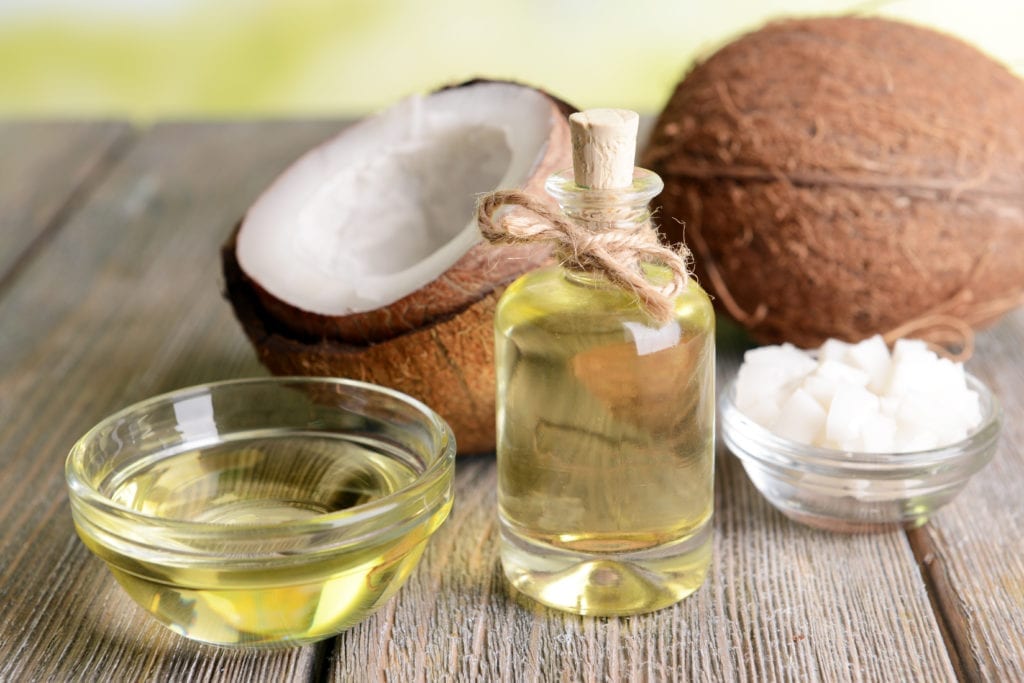
Coconut or Olive Oil
Coconut and olive oil work great to keep the skin moisturized and nourished. Applying a dollop of olive or coconut oil around your eyes can lock in moisture and keep your skin looking smooth and dewy. When applying the olive or coconut oil, use circular motions and avoid rubbing too hard.
FAQs
What are free radicals?
When reading about aging and wrinkles, you’ll often see articles discussing free radicals and their harmful impact on aging. But what is a free radical? Free radicals are uncharged molecules with unpaired valence electrons, and when they enter the body, they can cause damage to our cells by stealing their electrons.
Free radicals are found in pollutants like smog and cigarette smoke, but they’re also found in some household cleaners. Minimizing your exposure to these and using skincare packed with antioxidants can prevent free radicals from accelerating the aging process.
Why are lines around the eyes called crow’s feet?
While “crow’s feet” isn’t the loveliest term for lines on the face, the name simply comes from their appearance. When you look at these wrinkles sideways, they resemble tiny crow’s feet.
What age do crow’s feet form?
Crow’s feet can develop in both younger and older populations. They typically begin to form in your 30s or 40s, but even those in their 20s are not totally safe from eye wrinkles. Genetics, hormones, and how well you care for your skin all play a role in how early wrinkles form.
Did We Help?
We hope our guide to everything crow’s feet has offered insight into how these pesky eye wrinkles form and how to get rid of them. Just remember, having crow’s feet is completely normal and natural — they’re not a sign of poor health, and there’s no absolute need to get rid of them. That said, it’s understandable that lines around the eyes can be bothersome to many.
If you want to enhance the appearance of your skin and smooth wrinkles, don’t feel deflated, there are plenty of ways to achieve younger-looking skin. Whether you’re into home remedies or interested in cosmetic procedures, you’ve got options.
When weighing possible options, though, try to keep in mind your specific needs, as there’s no one treatment option that’s best for everybody. If you’re having trouble determining the right treatment method for your wrinkles, consult with your dermatologist. They’ll be able to help you plot the best course of action.


